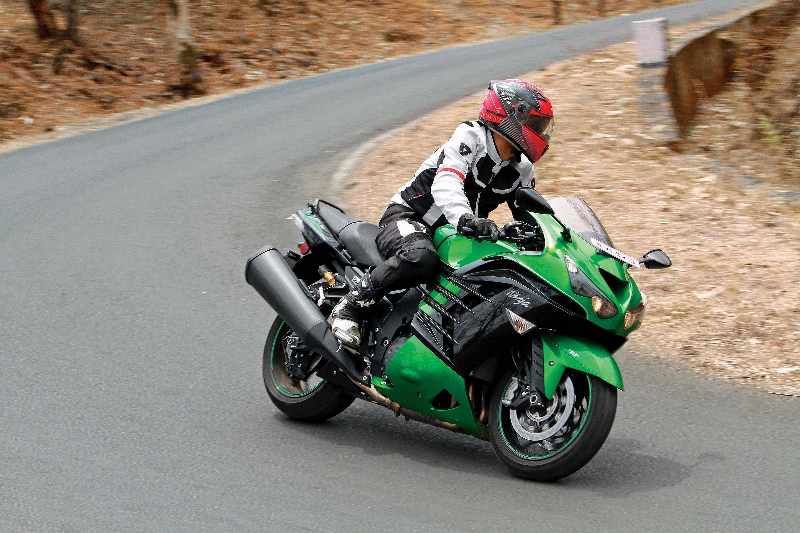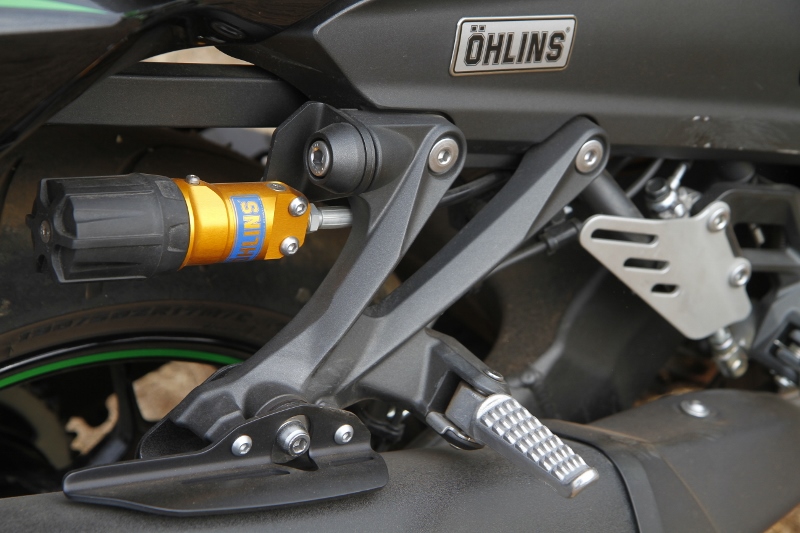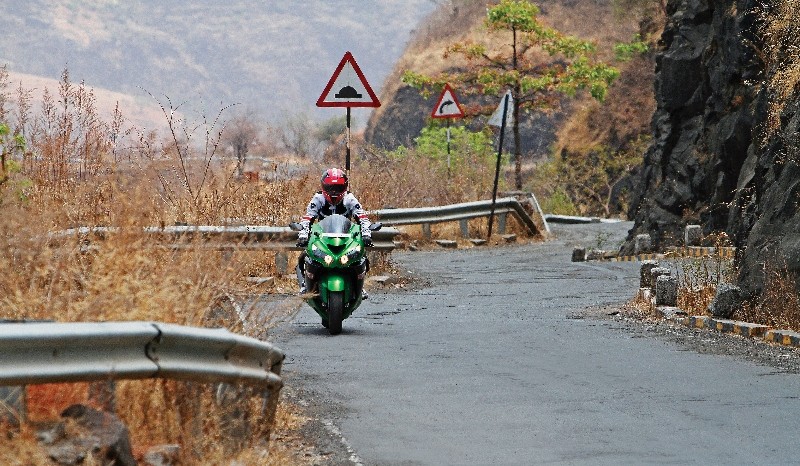
The other thing I noticed (much to my surprise) as I headed out for the photo shoot was that despite its intimidating bulk, the Ninja ZX-14R is actually quite easy to manage. For its size and weight, the bike feels much lighter on the move. It’s fairly fleet-footed as well for a bike that sports a 1,480-mm wheelbase. Part of this could be the fact that the ZX-14R shares its 25-degree rake with the much sportier ZX-10R. The weight distribution (although the exact figures weren’t available in the product specifications) seemed fairly neutral, too, and at no point did it feel as if the bike was too nose-heavy or vice-versa. Through some moderate paced bends and switchbacks, the bike felt agile and held its line as if it were on rails. Where the bike really comes into its own, however, is when you crack the throttle open on a long straight stretch. You will find none of the twitchiness that you might experience on other bikes capable of similar acceleration. This bird chases the horizon like there’s no tomorrow, all the while feeling rock-stable. I could just about manage to breach an indicated 175 km/h and it felt like I was barely scratching the surface of what the ZX-14R is truly capable of.
 For the 2016 model year, the Kawasaki Ninja ZX-14R gets a suspension upgrade with the rear monoshock now being a fully adjustable Öhlins. The 43-mm upside down front forks, too, are adjustable for compression and rebound damping and preload. What all this essentially means is that you can pretty much customise your bike’s ride quality. If it feels too stiff, you can soften things up at the rear via the golden rotary knob or at the front by twisting the over-sized goblin green nuts. I was riding the bike on the standard suspension setting and found the ride quality quite pliable and comfortable. Of course, it’s stiff enough to let you know what’s underneath those 120/70 ZR17 front and 190/50 ZR17 rear tyres, but nothing that’ll jolt you out of your comfort zone.
For the 2016 model year, the Kawasaki Ninja ZX-14R gets a suspension upgrade with the rear monoshock now being a fully adjustable Öhlins. The 43-mm upside down front forks, too, are adjustable for compression and rebound damping and preload. What all this essentially means is that you can pretty much customise your bike’s ride quality. If it feels too stiff, you can soften things up at the rear via the golden rotary knob or at the front by twisting the over-sized goblin green nuts. I was riding the bike on the standard suspension setting and found the ride quality quite pliable and comfortable. Of course, it’s stiff enough to let you know what’s underneath those 120/70 ZR17 front and 190/50 ZR17 rear tyres, but nothing that’ll jolt you out of your comfort zone.



Leave a Reply